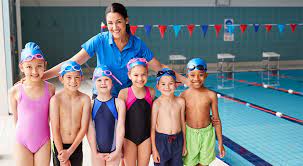Standing poolside, stopwatch in hand, shouting encouragement to eager learners—it’s more than just a job. Teaching water safety is a career that shapes lives. Whether it’s a toddler learning to float or an adult conquering their fear of deep water, swim instructors play a crucial role in building confidence and saving lives.
But aside from the emotional rewards, one common question floats to the surface: How much does a swim teacher get paid in Australia?
Let’s dive into what a swim teacher earns, what qualifications you’ll need, and how completing a water safety course can set you up for long-term success.
Why Water Safety Is a National Priority
Australia’s relationship with water is unique. From backyard pools to open beaches, water is part of our everyday life. Unfortunately, so is the risk. On average, more than 280 people drown in Australian waterways every year, with thousands more involved in non-fatal incidents.
These statistics highlight why water education is critical. For many, it starts in the early years through local swimming programs. Behind these programs are qualified instructors—people trained to deliver essential skills that reduce drowning risks.
And that’s where the water safety course comes in.
Starting Out: What You Need to Become a Swim Instructor
Before we get to the salary, it’s important to understand what qualifies someone to teach.
To work as a swim instructor in Australia, you’ll need to complete a certified water safety course. These programs combine practical training with theoretical knowledge. Core modules typically include:
- Entry-level stroke development
- Risk identification and supervision
- Emergency response and first aid
- Teaching strategies for different age groups
Many courses also require or include a valid CPR certificate and a Working With Children Check.
Once certified, you’re ready to teach at local swim schools, public pools, recreation centres, and even private lessons.
So, What Does It Pay?
Swim teacher wages in Australia can vary based on experience, location, and the type of facility. Here’s a breakdown of what instructors can expect:
Entry-Level (0–1 year experience):
- $26 to $30 per hour
Instructors just starting out typically work part-time or casual hours. Many pick up weekend shifts or after-school sessions.
Mid-Level (2–5 years experience):
- $30 to $40 per hour
With a few years under your belt, you’ll likely handle a broader age range and may be asked to train beginner coaches. Some instructors also step into assistant coordinator roles.
Senior-Level (5+ years or with specialisations):
- $40+ per hour
At this stage, you might teach adults, run stroke correction clinics, or take on program management duties. Some instructors also move into training future swim teachers.
It’s worth noting that swim instructors often enjoy flexible schedules, making it ideal for uni students, parents, or those juggling other work.
According to Fair Work Ombudsman, swim instructors fall under the Fitness Industry Award, which sets minimum pay rates and entitlements for casual, part-time, and full-time workers in aquatic centres.
Real-Life Insight: Meet Jack from Brisbane
Jack started teaching swimming at his local pool while studying physiotherapy. “It started as a weekend job,” he says, “but within a year, I was getting more hours than I expected.”
Now five years in, Jack earns $42 an hour, trains adults recovering from injury, and even runs weekend stroke clinics. “The training gave me options. It’s flexible, rewarding, and the money’s solid for the hours I put in.”
Stories like Jack’s are common across Australia. Many instructors start small, then turn it into a long-term career or blend it with other health and education roles.
Who Should Consider This Career?
If you enjoy working with people, love being in the water, and want to make a real difference, becoming a swim teacher could be your calling.
Here’s who it suits best:
- University students looking for flexible, meaningful part-time work
- Parents or carers who want school-hour shifts
- Career changers from education, fitness, or healthcare
- Retirees who want to stay active and give back to the community
And while you don’t need to be an elite swimmer, confidence in the water is essential.
Where the Jobs Are
Opportunities exist all over the country. Demand is especially high in:
- Coastal towns with busy swim schools
- Regional centres with fewer qualified staff
- Private programs offering one-on-one or small group classes
- Schools that run in-curriculum swimming lessons
If you complete a water safety course, you’ll be qualified to work in a range of settings—everything from leisure centres to independent aquatic educators.
Wrap-Up: Is It Worth Doing?
Becoming a swim teacher offers more than just financial rewards. It’s one of the few jobs where you see your impact immediately—when a child finally swims without help or an adult floats for the first time without fear.
The hourly pay is competitive, the demand is growing, and the skills you learn are life-long. Best of all, it starts with one step: enrol in a certified water safety course.
If you’re ready to get in the water and start a career with purpose, there’s never been a better time.

